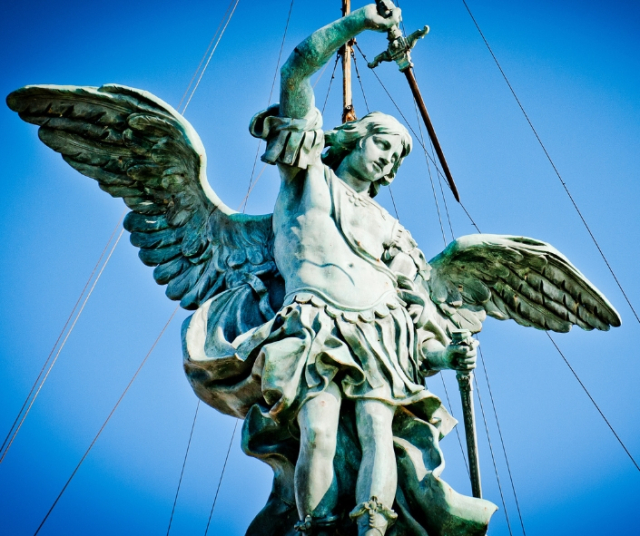In Spain, " San Miguel's Day " is a festival of great cultural and religious significance that is celebrated on September 29 of each year. This date commemorates Saint Michael the Archangel, one of the most revered saints in the Christian tradition, and is an occasion to express devotion, celebrate spiritual heritage, and participate in various festive activities.
The meaning of Saint Michael the Archangel
Saint Michael the Archangel occupies a prominent place in the religious and spiritual tradition of multiple cultures and religions, playing a central role as a defender of faith and justice. Its meaning transcends borders and beliefs, unifying people in their admiration and devotion towards this powerful celestial being.
The Angel Warrior and Victor of Evil
The name of Saint Michael, "Who is like God?" in Hebrew, it reveals his pivotal role in the struggle between good and evil. He is described as the leader of the heavenly hosts in their confrontation against the forces of evil, led by Satan. Saint Michael is the angel who challenged and defeated Lucifer in the heavenly war, throwing him out of heaven and defeating his rebellion. This victory consecrates him as the symbol of divine justice and the victor of evil in all its manifestations.
Saint Michael is also revered as a protector and spiritual guide. He is credited with the responsibility of caring for and guiding souls on their journey towards eternity. His role as protector extends to protecting individuals and communities against physical and spiritual dangers. Many believers turn to Saint Michael in times of difficulty and danger, seeking his intercession and strength.
In the Christian tradition, Saint Michael personifies essential virtues and values. His bravery in the fight against evil reflects the importance of facing adversity with determination and courage. His fidelity to God and his mission represent unwavering loyalty and devotion. Saint Michael is also associated with justice and protection of the weak, inspiring people to stand up for what is right and act with compassion.
While Saint Michael has deep roots in Christian tradition, his influence extends beyond religious boundaries. It is found in various religions and cultures, such as Islam and Judaism. In Eastern Christianity, Saint Michael is honored as the leader of the angels and a divine guardian. In Islam, he is known as Mikail and is credited with the task of delivering divine rewards to the faithful.
History and Origin of the Celebration
The Day of San Miguel in Spain has ancestral roots and is related to older religious festivities. In the Catholic tradition, this date commemorates the day a church was dedicated in honor of Saint Michael the Archangel in Rome , which occurred in the 5th century. Over the centuries, the celebration spread to various regions and countries, including Spain.
Traditions and Celebrations
Saint Michael's Day is celebrated throughout Spain with a variety of traditions and activities. In many communities, it is an important religious holiday that includes masses and processions in honor of Saint Michael the Archangel. The churches are usually adorned with flowers and acts of devotion are performed, such as prayers and songs. In addition to religious activities, Saint Michael's Day is also an opportunity to celebrate with festive and cultural events. In some regions, fairs, markets and folklore shows are held. Gastronomy plays a prominent role, with traditional dishes that vary by region. In some places, it is customary to share food and drinks with family and friends to mark the occasion.
San Miguel and the Popular Tradition
The figure of San Miguel also has an important place in the popular tradition and popular beliefs in Spain. He is considered a protector against evil and it is believed that his intercession can provide protection and help in times of difficulty. In some regions, rituals and symbolic practices are carried out to seek their protection and blessings.
Devotion to Saint Michael the Archangel has also left its mark on culture and art in Spain. Throughout history, numerous artistic representations of Saint Michael have been created in paintings, sculptures, and other forms of artistic expression. His figure has become a symbol of courage, justice and spirituality in Spanish culture.
